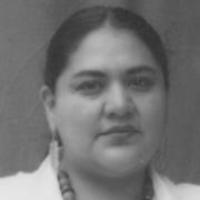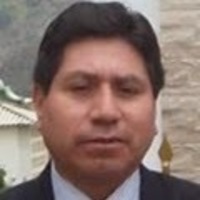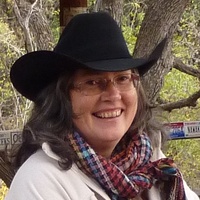
Andres Rojas
Related Authors
Serafin M. Coronel-Molina
Indiana University
Karolina Grzech
Universidad Pompeu Fabra
Jose Raul Sandoval Sandoval
San Martin de Porres University
david browman
Washington University in St. Louis
Rosaleen E Howard
Newcastle University
Gregory Haimovich
University of Warsaw






Uploads
Papers by Andres Rojas
The Quechuas probably are the biological descendants of the first Andean population, but the line of descent is not direct. Several times in the history of the region, populations were moved in and out. Culturally, today’s Quechuas are the inheritors of an indigenous Andean culture that extends back at least to 8000 B.C.E. and quite likely as far as 20000 B.C.E. They see themselves as descendants of the Incas and the Quechua language was the one spoken by the ancient empire. Today, Quechua is still the most widely spoken Amerindian language in South America and, in Peru alone, over one fourth of the population speak it as their native tongue. Despite their ethnic diversity and linguistic distinctions, the various Quechua ethnic groups have numerous cultural characteristics in common with one another.
Subsisted farming is the base of the Quechua economy. They are known for their potato crops and for raising llamas and alpacas. Pottery, textiles and other handcrafts are also produced for sale at local markets. In terms of religion, they have been strongly influenced by Roman Catholicism, which was brought by the Spanish invaders in the 16th century. Nowadays, syncretism between Christianity and ancient Quechua religious practices walk hand in hand.
The Quechua are a diverse people with a rich culture but are still found at the bottom of the social strata and are very oppressed by the “whites” (full-blooded Spanish) and the mestizos (mixed-blood people).
With this research paper, our group intends to learn more about the Quechua people and also understand their history, cultural and religious practices. As we comprehend more about them, we will be able to better connect and share the good news of Jesus Christ with them.
The Quechuas probably are the biological descendants of the first Andean population, but the line of descent is not direct. Several times in the history of the region, populations were moved in and out. Culturally, today’s Quechuas are the inheritors of an indigenous Andean culture that extends back at least to 8000 B.C.E. and quite likely as far as 20000 B.C.E. They see themselves as descendants of the Incas and the Quechua language was the one spoken by the ancient empire. Today, Quechua is still the most widely spoken Amerindian language in South America and, in Peru alone, over one fourth of the population speak it as their native tongue. Despite their ethnic diversity and linguistic distinctions, the various Quechua ethnic groups have numerous cultural characteristics in common with one another.
Subsisted farming is the base of the Quechua economy. They are known for their potato crops and for raising llamas and alpacas. Pottery, textiles and other handcrafts are also produced for sale at local markets. In terms of religion, they have been strongly influenced by Roman Catholicism, which was brought by the Spanish invaders in the 16th century. Nowadays, syncretism between Christianity and ancient Quechua religious practices walk hand in hand.
The Quechua are a diverse people with a rich culture but are still found at the bottom of the social strata and are very oppressed by the “whites” (full-blooded Spanish) and the mestizos (mixed-blood people).
With this research paper, our group intends to learn more about the Quechua people and also understand their history, cultural and religious practices. As we comprehend more about them, we will be able to better connect and share the good news of Jesus Christ with them.